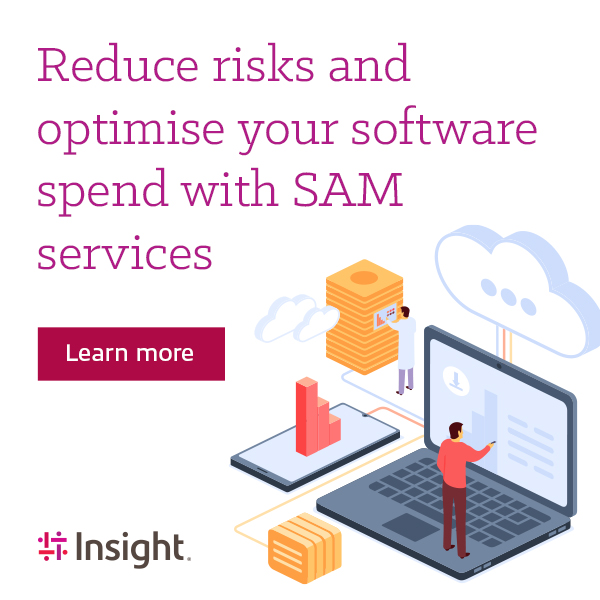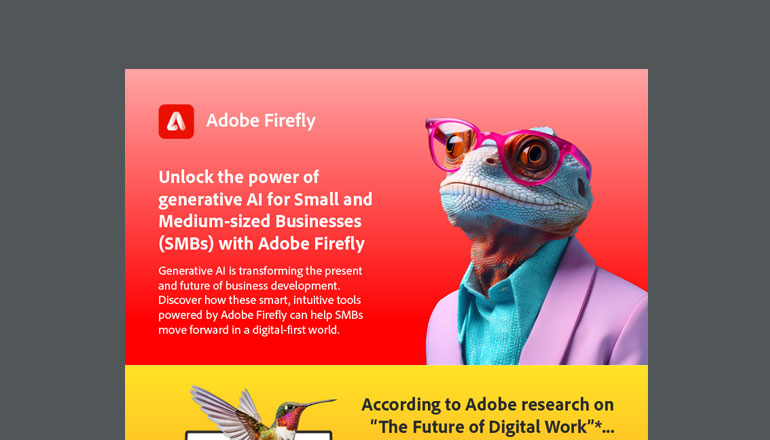Article The Solution to Overspending: ‘Software Asset Management’
Successful organisations are always on the lookout for ways to optimise their costs. However, most businesses are not aware of the huge quantities that can be saved by simply optimising their software estate.
By Insight Editor / 23 Jun 2020 / Topics: Software

Successful organisations are always on the lookout for ways to optimise their costs. Why spend money on unnecessary expenses if you can invest these financial resources into growing your business? However, most businesses are not aware of the huge quantities that can be saved by simply optimising their software estate.
In uncertain times, even a slight increase in revenue or a reduction in expenses could have a significant impact on a company’s profitability. Cutting costs can mean the difference between success and failure for both small organisations and larger enterprises, and there are many ways this can be done, such as reducing production costs, or sourcing alternative suppliers, or creating better marketing strategies. But did you know that the software on the devices of your employees also have enormous cost-saving potential?
When you think about it, software is just another company asset – an item of value that your business owns. For example, you may have an inventory of all chairs in your offices. In fact, you could even make a list of the chairs based on their size, colour, or any other characteristics. As a business expands, more chairs may be required. However, companies will always avoid unnecessary spending and only purchase the number of chairs they need.
The same could be said for software licenses. Are you aware of which licenses you own and how many of these licenses you really need? Are your employees using software in accordance with the contracts you have agreed? Unless you know the answer to all these questions, your business is probably not getting the fullest value of its investments and may even risk to lose income through fines and penalties. Research by Gartner indicates that companies could cut their software spending by as much as 30% if they optimise their software management.
Managing your software assets
Managing software may not sound like a complex task, especially for organisations with a dedicated IT team in-house. Still, larger companies with a very dynamic environment often find this to be a challenge. How do you keep track of software on the devices of thousands of employees, each working in different departments with specific priorities? They may be using Software-as-a-Service (SaaS) applications that are impossible to track without specialised tools. This concept, also known as Shadow IT, presents many risks. Sharing critical business data on Dropbox, for example, could turn you into a target for cybercriminals, or you could face fines as these applications require certain licenses as well.
The solution is Software Asset Management (SAM), a strategy that leads to better decision making about software licenses and reduces your overall costs.
How? Above all, your software assets must be compliant: you should buy the right licenses for your practices and respect the contractual terms. Having a license does not mean you can use the software for just about everything. There may be contractual restrictions and additional licenses can often be required. Licenses also need to be renewed in time. It usually costs more to procure a new license than it is to renew an existing one. Oracle, for example, charges 1.5% reinstatement fee for each day a renewal is delayed.
Being compliant is particularly important as companies must always be prepared for an audit. Gartner’s research suggests two out of three firms should expect an audit by a vendor in the next few years. Irregularities often result in fines that cost much more than buying the appropriate license in the first place. Apart from direct financial loss, a negative audit will also damage the reputation of an organisation.
To be on the safe side, many organisations often procure more licenses than they actually need. Although this helps to avoid penalties, they still waste money that could be better invested in other areas. Businesses also tend to pay for software packages that include licenses they do not need. When your employees only use Photoshop, for example, you should not buy the entire Adobe bundle. This so-called over-procurement also occurs when businesses move their data to cloud services. Most of the time, they pay for much more oversized resources than what they really need.
Is it enough to be compliant?
All major vendors – Microsoft, IBM, Oracle and SAP – have different challenges and expectations you need to consider. Being compliant means that your license estate is in accordance with the contractual terms. A proper SAM process in place, not only can help you achieve compliance, but also increase the value of your investment.. Once you have a clear view of the licenses you own, you can properly plan for the future. So, when a new project requires software you immediately known how many licenses you have and what should be procured. You can also reassign a license when an employee leaves the company or is transferred to a different department. And finally, you can limit financial loss through mitigating security risks when you have a view of what software is being deployed.
By now, it should be clear that SAM can help you avoid wastage. However, it involves more than just software and technology. Unless proper processes are in place, people can be ineffective, and technology could fail. People, process and product must therefore be in alignment. Fortunately, there are tools to help you that scan your environment to achieve an overall view of the software that is used. These tools automatically manage your licenses and ensure compliance. After all, licenses often change, and it is hard to stay informed. This results in more informed decisions about your software licenses.
Insight does more than just ensure compliance. We offer the most relevant optimisation services to support your to business manage its software estate as well as ensuring you can negotiate the best terms and conditions in your contracts. For example, a software vendor might offer you a nice discount, but at the same time give your competitors even better terms. And do you really need all the cloud services you are paying for? Maybe you could maintain the same level of performance with less resources.
Besides this, Insight also provides advisory services and makes sure clients are well-prepared for an audit. We conduct compliancy exercises to assess whether you need extra licenses or if you are purchasing more than you use. We also implement SAM tools in your environment and can even manage your entire software lifecycle to ensure you achieve a lean and fit for purpose IT supply chain that supports the evolution of your business.






